If I told you that someone was creating a computer-generated superhero to fight crime in the city, you probably wouldn’t bat an eye. But what if I told you that someone imagined and visualized this exact same concept back in the eighties?
That would be a little shocking, wouldn’t it? This is the very same concept that created Automan, Glen A. Larson’s American superhero television series. It ran for 12 episodes, although ABC produced 13 between 1983 and 1984.
It purposefully mimicked the aesthetic aspects of Walt Disney Pictures’ live-action feature Tron in the context of a superhero TV series. The show eventually aired in repeats on the Sci-Fi Channel. Automan was a somewhat novel concept for its time, and it is very interesting to see how people in the past viewed a technology that we’re so close to accessing in the near future.
What was the show all about?
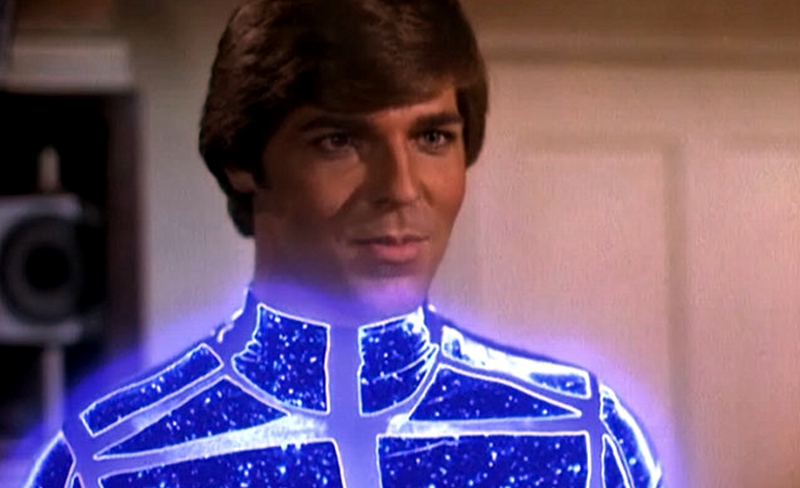
Automan, also known as the “Automatic Man,” follows the exploits of a police officer and computer programmer named Walter Nebicher, played by Desi Arnaz Jr., who has created an artificially intelligent crime-fighting program that generates a hologram, played by Chuck Wagner, capable of leaving the computer world at night and fighting crime.
Walter Nebicher, the expert programmer and police officer, creates a crime-fighting AI at the police mainframe, powerful enough to spontaneously bring to the real world a program’s hologram, who introduces himself as Automan and resembles a program in TRON: his body glows with geometrical patterns in neon cyan light.
In the real world, Automan pretended to be a federal agent named “Otto J. Mann.” He worked with his creator, to whom he was wholly devoted. Except for Walter’s close partner, Roxanne Caldwell, played by Heather McNair, this was a closely guarded secret. Nebicher and Automan could unite to form one person, sharing awareness and talents while keeping Automan’s invulnerability.
Both Walter’s superiors, Lieutenant Jack Curtis and Captain of Detectives E. G. Boyd were played by Robert Lansing and Gerald S. O’Loughlin, respectively. Both thought Automan was a comrade from the FBI. Captain Boyd, a technophobe who despised computers, frequently held up Lieutenant Curtis as the type of officer he felt was ideal for the police – an ideal he believed Walter could never attain.
The series is definitely influenced by Steven Lisberger’s previous year’s blockbuster TRON. Donald Kushner and Peter Locke, who previously collaborated on TRON, serve as Automan’s operating producers. The goal of this collaboration was to minimize obvious plagiarization while also providing respected credibility to the series.
Notably, the central narrative is the inverse of TRON’s: a computer program is brought into the actual world rather than a human being transferred into a digital one. Although the visual effects appear to be comparable to those employed in TRON, they are not. The actor playing Automan is dressed in a suit with reflective plates and lighting components, and the takes were taken with a beam projected over the actor. The final product was improved in post-production.
Exploring the initial episodes and the overall story arc
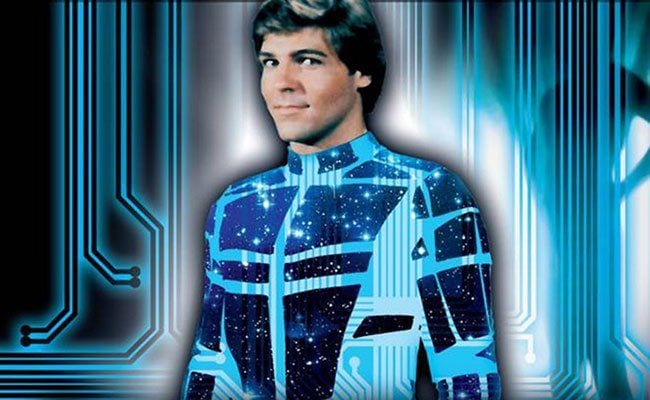
As episode one begins, we are introduced to Walter Nebicher, a man who wishes to combat crime. Walter Nebicher is an awkward geek. He’s the lone inhabitant of the police department’s new computer section, imputing data in search of links and connecting to other computers via these wonderful things called modems. Walter’s dream is to go out into the world and be a real cop. Still, the station’s Captain, Boyd, is resentful of the federal mandates that forced him to install all this seemingly unnecessary technical stuff, and instead, he focuses all his attention on the bumbling but well-meaning Lt. Curtis. The latter, in turn, frequently looks to Walter for solutions to his own problems.
Walter has figured out how to employ free-moving and solid holographic technology to construct an entity that is everything he isn’t. Automan, short for Automatic Man, is tall, dashing, and as clever as a whip, and has such serene assurance that he walks down the street and enters a diner despite being coated in vibrantly shimmering blue polygons.
He can tabulate massive amounts of data; he can change his molecular structure so that he’s hard as a rock one moment and wispy enough to pass through a wall the next; he talks to machines politely, with perhaps a little flirting thrown in, to make them more receptive; and he has a flitting pixel of an aide named Cursor.
The opening credits introduce this pixel Cursor as Himself, who can “draw ” physical objects and vehicles into reality. Daylight is Automan’s Kryptonite since that’s when everyone wakes up and kicks the power grid into high gear. Walter’s vision of perfection is Automan, but he still has defects in his programming, and the true heart of the story is about Walter understanding that he still needs to grab the ball and go out there and be a cop at times, which he achieves by apprehending a suspect, infiltrating the villain’s headquarters, and impressing one of the evil men into acting as his guide.
The primary narrative is that of Patrick Macnee, the CEO of a Swiss corporation that is kidnapping all types of minds – scientists, stock traders, engineers – in order to build its own enforced brain trust. The citizens can’t leave, but if they participate, they’ll have all the wine, pool parties, and loose women they want; if they don’t, they’ll get a prison cell, torture, and maybe a public execution.
It becomes rather grim when Curtis and a female Interpol colleague are brutally added to the captive collection. When Automan and Walter appear, the tone shifts entirely into fantasy mode. A pair of thugs that have been cold, capable, and efficient up until this point start after our heroes, who have taken to the road in their neon AutoCar. The AutoCar abruptly makes a 90-degree spin and vanishes. The thugs slip and crash into a shop, leaving these two seasoned thieves in a humorous daze.
In an unusual twist, the genesis tale of Automan is told in the manner of a two-minute opening montage. It’s intriguing to leap right into the central plot with Automan already created. In another weird twist, while the rest of the department is still unaware of Automan, Walter’s love interest, a lovely blonde called Roxanne, is aware of the secret. She still only believes it half-heartedly, but not only does Walter explain the objectives and history of his invention to her, but she also gets to meet Automan in the “flesh.”
In the second episode, when an informant supplying information on the Mob’s effort to acquire a casino in Las Vegas is abducted, Walter and Automan investigate electronic records and discover the trail goes to an influential judge who happens to be the police commissioner’s best friend. Here, we are introduced to men in suits who look like accountants. They have sneering mustaches, peering glasses, and insidiously well-groomed hair.
These individuals have used their casino to transfer mafia money around so that the most law-abiding judge seems to be a filthy rat in the hopes that he’ll go down and take a lot of ongoing cases with him. This story also brings Automan to a disco. The music is obvious but fun, house band renditions of Michael Jackson and the Bee Gees. Automan is progressively swept up by the moment and begins removing his polyester suit to display the glowing polygons beneath until Walter strolls into the room, pauses in a daze at what he sees, and exhales, “Oh. My. God.”
The bond between these two is what really makes this episode. Automan has incredible talents, but his knowledge and programming are limited, so Walter can’t just sit back and let his invention do all the heavy labor. And there’s another unpredictable aspect that keeps Walter on his toes: Automan is beginning to work around his programming. Automan takes the initiative several times, such as when he tries changing his own look or goes to Vegas on his own. There’s even a serious moment where he confronts his creator about his limits, albeit it ends on a giggle and is never followed up on in this episode. It will soon be the subject matter for later episodes, seamlessly intertwined with the main protagonists’ crime-fighting sprees.
Automan – the crime-fighting protagonist
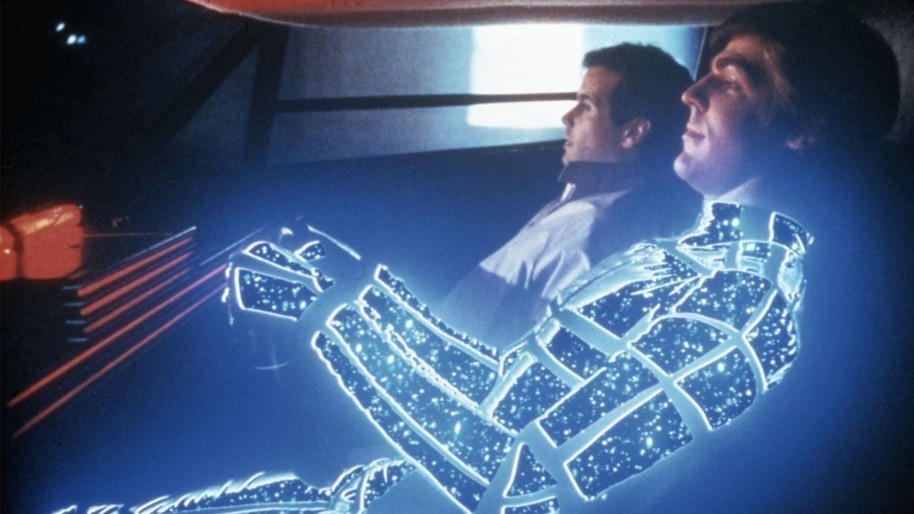
Walter Nebicher is the primary protagonist of the TV series Automan. He built an artificially intelligent crime-fighting software that spawned a hologram, Automan, that was able to leave the computer world and enter reality to assist in the battle against crime.
In the actual world, Automan possesses superhero-like talents, yet he absolutely fails in human interactions. He can manifest conveyances such as a car, aircraft, or helicopter with the help of a companion polyhedral and free-floating entity named “Cursor,” which is similar to TRON’s Bit. Cursor can create three-dimensional wireframe automobiles and materialize them in seconds at Automan’s request.
When the constructions are no longer required, Cursor may remove them using the opposite procedure. As a side result, Automan’s automobile only rotates at 90-degree angles since it employs the same algorithm as Pac-Mac, as developed by Nebicher, and defies physics by turning around instantly. Due to inertia, human passengers are inevitably buffeted around inside during such spins. The most frequent forms of these were an automobile, popularly known as the Auto Car, an airplane, and a helicopter, all of which could defy physical rules.
Nebicher and Automan can unite to become one person, sharing awareness and abilities while keeping Automan’s invulnerability to gunfire and explosives. Only Automan’s form, a human head atop a luminous torso composed of circuit patterns and flickering light, could be seen during the “merges.”
Marvelous Verdict – A neat presentation of a gripping story and impressive special effects
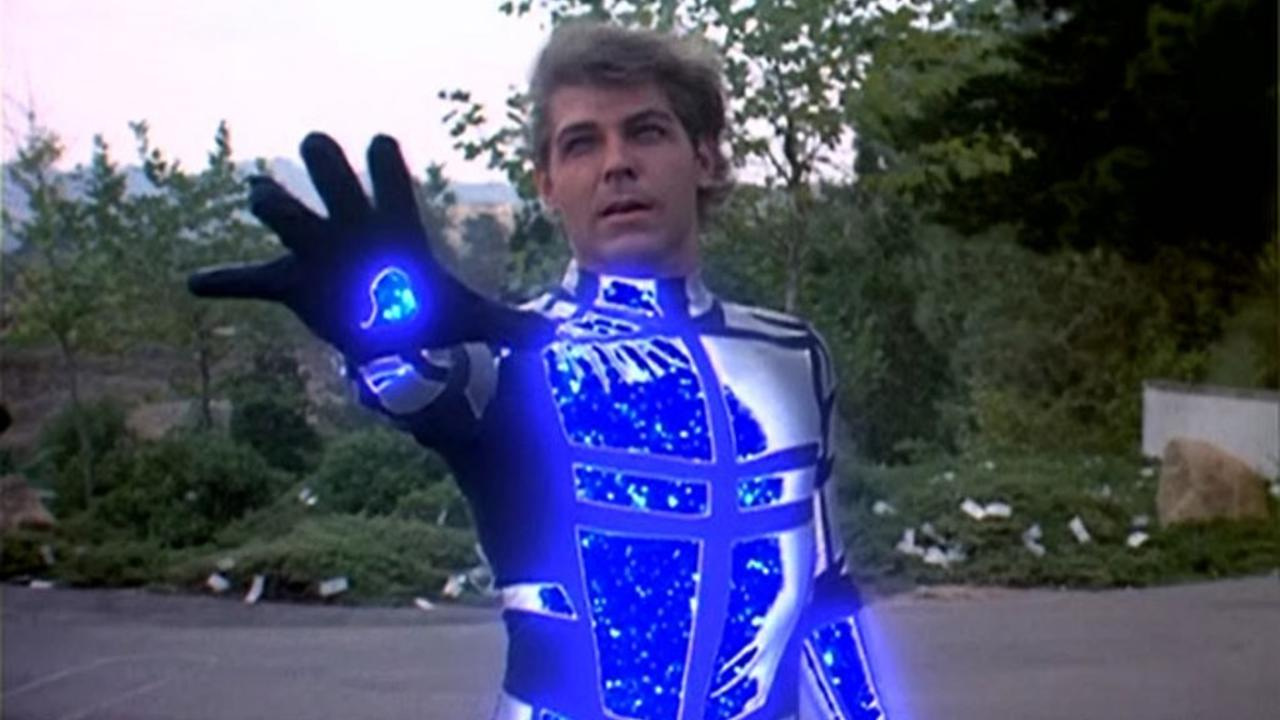
In the mid-1970s, American TV programs were more and more fascinated with the concept of being “super” than ever before. After the cowboy programs, spy shows, and mystery solvers, we arrived at the point of a guy, or a woman, who is half human and part machine, or that person who has superpowers in any case. It’s a well-known subject in old comics, but the revelation, or revolution, occurred on television in the 1970s. The 1980s were rife with upbeat TV action programs that we no longer see.
It’s easy to miss the old popcorn dramas, which were nothing if not entertaining and gave plenty of light reprieve from the stresses of daily life. Even if they only lasted one season, many people enjoyed them. When an American TV program was terminated, it was of little relevance to the rest of the world back then, and therefore we never found out why these fantastic series went away.
Automan was born around the beginning of the 1980s. It was a brilliant and amusing concept. The slogan, “A computer-generated superhero and his human creator combat crime in their city,” was music to everyone’s ears! Consider a talking computer in the shape of an athletic good guy with a hilarious human companion who is always in action; the ironies are limitless.
Many people liked “Automan” because it appeared to be the inverse of “Tron.” Even when compared to Christopher Reeve’s Superman, the hero was relatively straight-laced, but the presentation had plenty of visual pleasures and action to satisfy both youngsters and adults. And, unlike most modern shows, its premise skillfully calls to the child in you. I’m sure if you saw that as a youngster, you’d never forget it. Chuck Wagner’s azure image as Automan will live on in your recollection for the rest of your life.
As adults, the previously younger viewers can now even enjoy elements like the main character’s unnecessary striptease in one episode, which were blatantly introduced to increase viewership, but in a pleasant and humorous way! With the end of the 1980s came the end of much of the childlike, naive joy.
We believe that seeing these episodes now will make you appreciate them much more than before and reveal the secret to why they are true masterpieces for reasons other than nostalgia. Unfortunately, Automan only lasted 13 episodes; we won’t argue that 13 is the unluckiest number for many canceled series, but let’s just say that this show could have given us a few more chuckles before ending so suddenly.
Conclusion
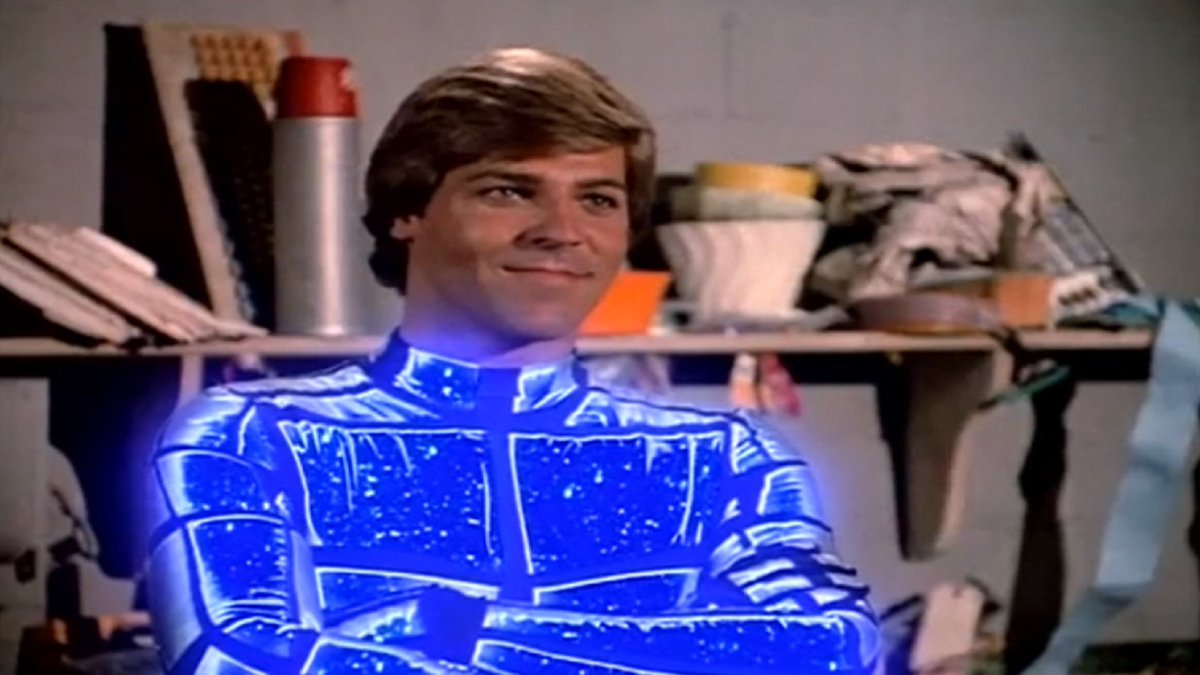
Automan is an enjoyable show overall, with quirky special effects and a storyline that was a very interesting experiment for its time. The actors pulled off their characters well and added even more charm to this old-school classic. This show will be an exciting watch for those of us who wonder what the older generations believed about the evolution of technology.
It is also a compelling watch for enjoyers of old-timey sci-fi media like TRON. With its exciting protagonists and fast-paced storyline, this show, while short-lived, really sets itself apart from the many other series of its time. If this were to be renewed for another new, action-packed season, we believe that it would have the potential to amass a huge fan following even now.
